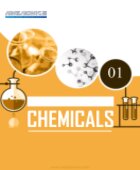
Global Polyisobutylene (PIB) Market Outlook 2020-2026
Date: Feb-2020 | Id: MACRC-1318 | Geographical Scope: Global | Publisher: MACRC
Polyisobutylene (PIB) was first developed by the BASF unit of IG Farben in 1931 using a boron trifluoride catalyst at low temperatures and sold under the trade name Oppanol B (de). PIB remains a core business for BASF to this day. Polyisobutylene can be reacted with maleic anhydride to make polyisobutenylsuccinic anhydride (PIBSA), which can then be converted into polyisobutenylsuccinimides (PIBSI) by reacting it with various ethyleneamines. These derivatives have interesting properties when used as an additive in lubricating oils and motor fuels.[3][4] Polyisobutylene added in small amounts to the lubricating oils used in machining results in a significant reduction in the generation of oil mist and thus reduces the operator's inhalation of oil mist.[5] It is also used to clean up waterborne oil spills as part of the commercial product Elastol. When added to crude oil it increases the oil's viscoelasticity when pulled, causing the oil to resist breakup when it is vacuumed from the surface of the water. As a fuel additive, polyisobutylene has detergent properties. When added to diesel fuel, it resists fouling of fuel injectors, leading to reduced hydrocarbon and particulate emissions. It is blended with other detergents and additives to make a "detergent package" that is added to gasoline and diesel fuel to resist buildup of deposits and engine knock. Polyisobutylene is used in some formulations as a thickening agent. Polyisobutylene is often used by the explosives industry as a binding agent in plastic explosives such as C-4. Polyisobutylene binder is used because it makes the explosive more insensitive to premature detonation as well as making it easier to handle and mold. This report provides detailed analysis of worldwide markets for Polyisobutylene (PIB) from , and provides extensive market forecasts (2020-2026) by region/country and subsectors. It covers the volumes, prices, historical growth and future perspectives in the Polyisobutylene (PIB) market and further lays out an analysis of the factors influencing the supply/demand for Polyisobutylene (PIB), and the opportunities/challenges faced by industry participants. It also acts as an essential tool to companies active across the value chain and to the new entrants by enabling them to capitalize the opportunities and develop business strategies. The report has been prepared based on the synthesis, analysis, and interpretation of information about the global Polyisobutylene (PIB) market collected from specialized sources. The report covers key technological developments in the recent times and profiles leading players in the market and analyzes their key strategies. The competitive landscape section of the report provides a clear insight into the market share analysis of key industry players. The major players in the global Polyisobutylene (PIB) market are BASF (Germany), INEOS (France), TPC Group (USA), Lubrizol (USA), Hongrui New Material (China), CNPC (China), BASF-YPC (China) etc. The report provides separate comprehensive analytics for the North America, Europe, Asia-Pacific, Middle East and Africa and Rest of World. In this sector, global competitive landscape and supply/demand pattern of Polyisobutylene (PIB) industry has been provided.
Part 1. Exclusive Summary Part 2. Methodology 2.1 Research Methodology 2.2 Geographic Scope 2.3 Years Considered Part 3. Introduction 3.1 Polyisobutylene (PIB) Definition 3.2 Supply Chain Structure 3.2.1 Raw Material Supply 3.2.2 Manufacturing 3.2.3 Production Cost Analysis Part 4. Market Landscape 4.1 Global Polyisobutylene (PIB) Market by Volume 4.1.1 Overview 4.1.2 Global Polyisobutylene (PIB) Volume 4.1.3 Top 10 Polyisobutylene (PIB) Companies (Volume Share) 4.2 Global Polyisobutylene (PIB) Revenue 4.2.1 Overview 4.2.2 Global Polyisobutylene (PIB) Market by Revenue 4.2.3 Top 10 Polyisobutylene (PIB) Companies (Revenue Share) Part 5. Segmentation by Type 5.1 Type 1 5.2 Type 2 5.3 Type 3 Part 6. Segmentation by Application 6.1 Application 1 6.2 Application 2 6.3 Application 3 6.4 Application 4 Part 7. North America Polyisobutylene (PIB) Market 7.1 North America Polyisobutylene (PIB) Market Size 7.2 Price & Margin 7.3 Trade Balance Part 8. Europe Polyisobutylene (PIB) Market 8.1 Europe Market Polyisobutylene (PIB) Size 8.2 Price & Margin 8.3 Trade Balance Part 9. Asia Pacific Polyisobutylene (PIB) Market 9.1 Asia Pacific Polyisobutylene (PIB) Market Size 9.2 Price & Margin 9.3 Trade Balance Part 10. Market Forecast 10.1 Market Size by Volume 2020-2026 10.1.1 North America 10.1.2 Europe 10.1.3 Asia-Pacific 10.1.4 RoW 10.2 Market Size by Revenue 2020-2026 10.2.1 North America 10.2.2 Europe 10.2.3 Asia-Pacific 10.2.4 RoW 10.3 Regional Consumption 2020-2026 10.3.1 North America 10.3.2 Europe 10.3.3 Asia-Pacific 10.3.4 RoW 10.4 Market by Type 2020-2026 10.5 Market by Application 2020-2026 Part 11. Company Profiles 11.1 Company A 11.1.1 Overview 11.1.2 Products Offered 11.1.3 Business Performance (Volume, Price, Revenue, Market Share) 11.2 Company B 11.3 Company C 11.4 Company D ... Part 12. Market Dynamics 12.1 Market Drivers 12.2 Market Challenges 12.3 Market Trends 12.4 Market Events Part 13. Appendix 13.1 Abbreviations 13.2 Disclaimer 13.3 Analysts Certification

